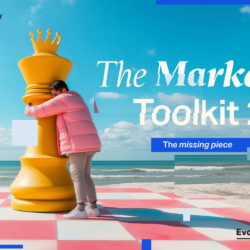When it comes to the tech and software that underpins a brand’s digital ecosystem and customer experience, businesses have historically opted for the ease and efficiency of monolithic systems. This is particularly true within larger organisations, which can have multiple departments working on different programme parts.
But while monolithic architecture might seem the best option for a business at first glance, it’s often far from it. Part of our work as an agency is helping brands transform their digital operations and improve their online experience, and time and again monoliths come up as a significant barrier to change. At a time of rapid evolution in the digital world and ever-changing customer needs, this is a huge problem.
Companies drive the most value when they approach their business systems holistically. That means not looking to one system to rule them all, but using several best-in-class systems and connecting them together. It helps drive innovation and enables businesses to get the best of what they need. With business costs continuing to spiral, it’s more important than ever that brands maximise their investment in technology. Moving to a holistic approach is a way to do just that.
Monolithic versus holistic
A monolithic system is like buying a ready meal. It’s convenient and straightforward, but you can’t easily change the flavours or ingredients to suit your evolving taste. You can’t turn a lasagne into a chicken tikka masala.
A holistic system is like having a well-stocked spice rack. You have a wide variety of spices at your disposal, and you can mix and match them to create a unique dish every time. It gives you the flexibility to adapt and experiment, making your culinary experience richer and more tailored to your preferences.
Businesses generally go for monolithic systems because, frankly, it looks easier. Monoliths offer out-of-the-box functionality and a quick route to market, with less setup time and a lower development cost. They provide everything a business needs in one neat package. In comparison, holistic systems require more involvement and likely a slightly higher development cost.
Upfront costs can be scary, but businesses must look at the bigger picture. It’s unlikely a monolithic system is the best decision for your business overall, and in any case, the cost will likely far exceed that of a holistic system over the long term.
A monolithic system will do exactly what it says it does — but that’s it
It’s set to a fixed road map, with little room for core customisation. That means it’s very difficult to change what it does, and when business requirements change, businesses often find they have to throw everything out and start again. That’s a considerable cost and a major stress.
Monoliths also tend to accumulate technical debt over time, pushing up the total cost of ownership in the long term. With a holistic system, you can swap parts of the system out and bring in different tech to grow and support the business as needed.
There is a library of ready-made components and modules to work with and it enables a much more flexible roadmap. It also provides businesses with best-in-class capabilities via the partners they can plug in. It wouldn’t be fair to say a monolith is completely rigid — some elements can be changed and modified. But it’s nowhere near as fast and agile as a holistic system.
Which is best for your business?
Like everything, there are exceptions to the rule, and some cases where taking the monolithic approach might be the right course of action. Again, it’s a faster route to market, and for some businesses, that might be critical. Ultimately, you need to look at your business’s and your customers’ needs. What are customers expecting or asking for? Look at the successes and failures in the current system — what’s missing? Cost-benefit analysis will also be crucial. A digital agency should be able to help.
Businesses that decide they will benefit from a holistic approach must then build a roadmap for change. This process should be about evolution, not revolution, so be pragmatic. Prioritise the areas most impacting business and customer needs and build a planned programme to retire or replace core functions.
You also have to undertake a platform selection process. You may need more flexibility in your website, making an open-source CMS platform a good choice. You may need a new digital asset management platform.
Regardless of your needs, this will require extensively researching the various available platforms or, again, speaking to an agency. It’s essential not to underestimate connectivity, as this will save time and money down the line.
Yes, it might seem more challenging at the start. However, a holistic system delivers better long-term value, flexibility, and the ability to adapt more effectively. Using an amalgamation of the best-in-class systems and technologies to suit your exact needs is what will really drive growth and provide the agility needed to respond to changing customer needs.
Featured image: Heather McKean / Unsplash






























